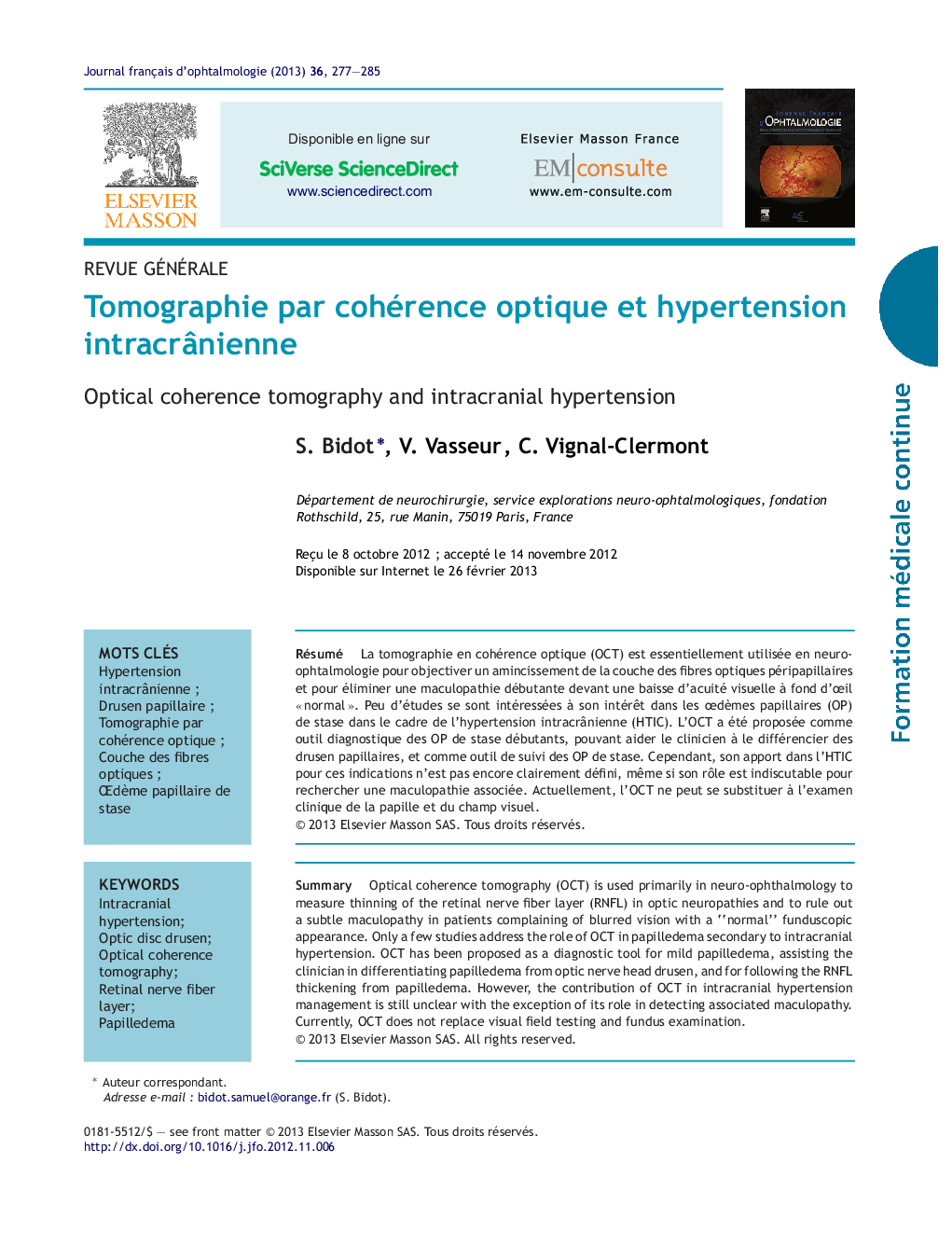| Article ID | Journal | Published Year | Pages | File Type |
|---|---|---|---|---|
| 4023887 | Journal Français d'Ophtalmologie | 2013 | 9 Pages |
Abstract
Optical coherence tomography (OCT) is used primarily in neuro-ophthalmology to measure thinning of the retinal nerve fiber layer (RNFL) in optic neuropathies and to rule out a subtle maculopathy in patients complaining of blurred vision with a “normal” funduscopic appearance. Only a few studies address the role of OCT in papilledema secondary to intracranial hypertension. OCT has been proposed as a diagnostic tool for mild papilledema, assisting the clinician in differentiating papilledema from optic nerve head drusen, and for following the RNFL thickening from papilledema. However, the contribution of OCT in intracranial hypertension management is still unclear with the exception of its role in detecting associated maculopathy. Currently, OCT does not replace visual field testing and fundus examination.
Keywords
Related Topics
Health Sciences
Medicine and Dentistry
Ophthalmology
Authors
S. Bidot, V. Vasseur, C. Vignal-Clermont,
